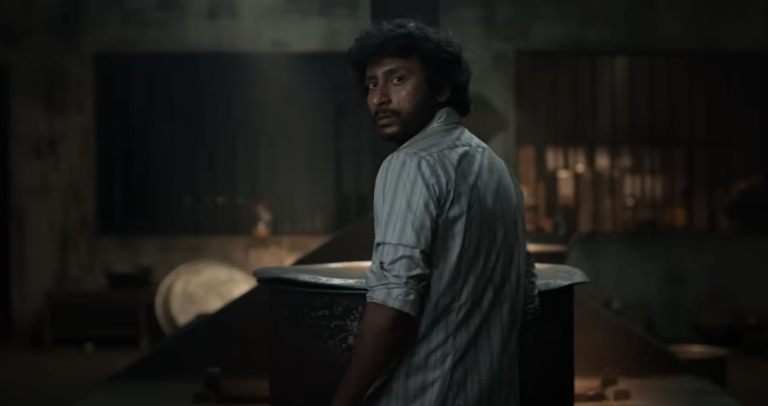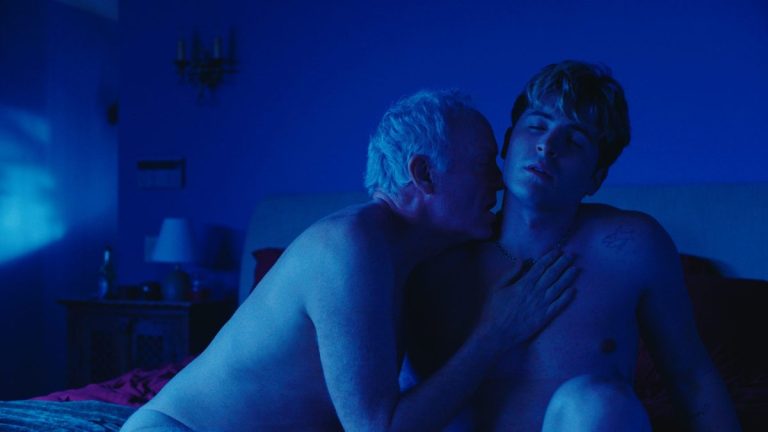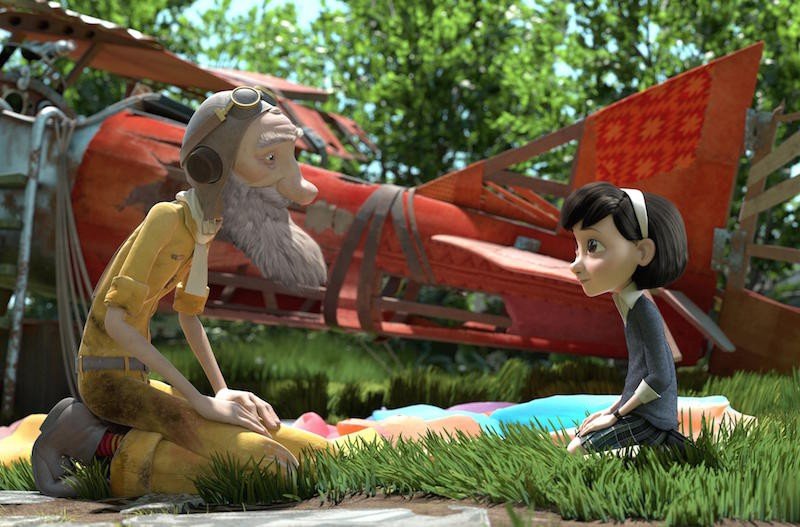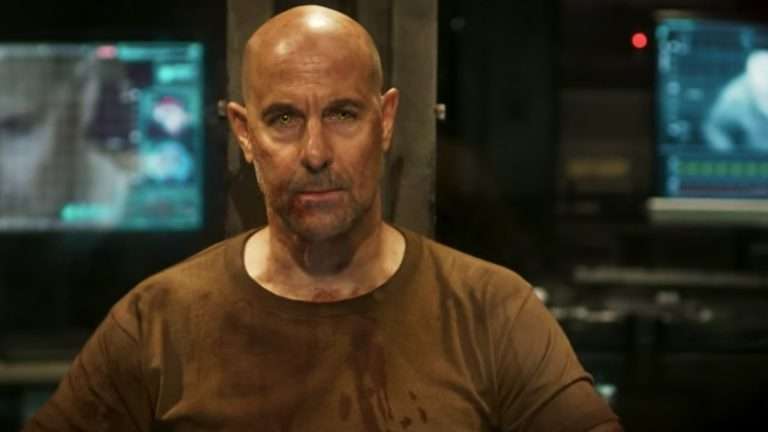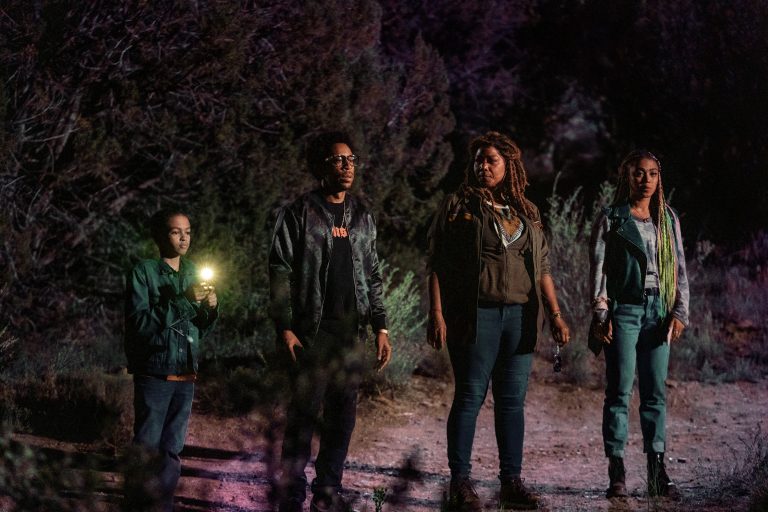In a deeply moving moment toward the end of the third act of Bong Joon-ho’s “The Host” (Original title: Goemool), Hyun-seo asks Se-joo, the little boy who is the only other survivor from the chemical monster’s claws, for a list of the things he wants to eat once he gets out, since she runs a small food stall. The kid, enthusiastic and wide-eyed, rattles off items with uncontainable eagerness, then asks Hyun-seo the same question in return. She answers, “cold beer.”
A more sentimental film might have treated this as the collapse of her coming-of-age, a tragic marker of innocence lost. But in the unruly genre fusion that Bong conjures, even her raw response to a loved one’s death erupts as one of cinema’s most darkly comic moments. Her craving for a cold beer feels almost inevitable—its bitter taste being the final trace of sensation before she was swallowed whole and spat back out into the sewer.
This is only one of several such moments in Bong’s genre-defying and thrillingly entertaining family drama. While it functions as a political satire that never hides its rage at nearly everything, it is never so calculated as to turn its monster-movie premise into a mere metaphor. Its elaborately designed and sophisticated (for its time) creature is mindless, curiously wandering, and often seemingly amused by the eccentricities of the family, determined to chase it in circles.
Through this basic honesty — survival beyond the dirt of propaganda — the film paints a powerful portrait of imperial carelessness without ever trying too hard. Its self-deprecating humor, the makeshift warmth of a family navigating absurd circumstances, and the sheer recklessness of its entertainment value strike again and again.
What follows is an attempt to explain some of the provocative, thrilling, yet warm and strangely charming qualities of this remarkable film.
The Host (Goemool, 2006) Plot Summary & Movie Synopsis :
In 2000, an American pathologist orders his Korean assistant to dump hundreds of bottles of formaldehyde down a drain connected to the Han River. Over the next few years, strange amphibious sightings in Seoul’s waterways begin to surface.
What happens to Hyun-seo?
By 2006, Park Gang-du, a slow-witted man, runs a small snack bar in Hangang Park with his father, Hee-bong. His family includes his daughter, Hyun-seo; his sister, Nam-joo, an Olympic archer; and his brother, Nam-il, an unemployed college graduate. One day, a massive creature rises from the Han River, storming through the park and killing dozens. While helping an American soldier fight the monster, Gang-du grabs Hyun-seo and joins the fleeing crowd, but loses her hand in the chaos. The monster snatches her and vanishes back into the river.
Why are the victims’ families forced into quarantine?
At the mass funeral, the victims’ families are suddenly forced into quarantine, including the Parks. Korean authorities, alongside the United States Forces Korea (USFK), announce that the creature is carrying an unknown deadly virus. In the hospital, Gang-du receives a phone call from Hyun-seo, who says she is trapped in the sewers with the creature before her phone dies. Determined to save her, the Park family escapes quarantine and purchases supplies from local gangsters to begin their search.
What does Gang-du overhear at the hospital?
Meanwhile, two homeless boys, Se-jin and Se-joo, are attacked by the monster and swallowed whole. It regurgitates them in its sewer lair, leaving only Se-joo alive. Hyun-seo discovers him and hides the boy in a drain pipe where the creature cannot reach them. The Park family soon encounters the monster, unleashing gunfire until their ammunition runs out. Barely hurt, the beast kills Hee-bong before escaping. Soldiers arrive and capture Gang-du, while Nam-il and Nam-joo flee in separate directions.
Nam-il contacts an old friend, nicknamed “Fat Guevara,” hoping to trace Hyun-seo’s phone call. He learns the government has put a bounty on his family, and Fat Guevara secretly alerts the officials. Nam-il narrowly escapes but secures Hyun-seo’s location near the Wonhyo Bridge. Elsewhere, Gang-du overhears an American doctor admitting that the virus is a hoax meant to distract the public from the creature’s origin. To silence him, they plan to lobotomize Gang-du. Hyun-seo attempts to escape the lair using a rope made from victims’ clothes, but the monster wakes and swallows both her and Se-joo.
What is the government’s plan?

Also Read: All Bong Joon-Ho Movies, Ranked
Gang-du manages to escape captivity by taking a nurse hostage, threatening to expose her to the “virus.” At the same time, the government and USFK unveil their plan to release a toxic chemical called “Agent Yellow” around the river. They present it as a solution to the crisis, concealing America’s role in the disaster to preserve public support.
The Host (Goemool, 2006) Movie Ending Explained :
What happens to Hyun-seo and Se-joo?
Gang-du finally locates the monster’s lair, spotting Hyun-seo’s arm dangling from its mouth. He chases the creature to the protest site where Agent Yellow is being deployed. The chemical release stuns the monster, and Gang-du drags Hyun-seo out, only to find she has died while shielding Se-joo, who is still alive but unconscious.
How is the monster killed?
Furious, Gang-du attacks the beast with Nam-il, Nam-joo, and a homeless man. Together, they set it on fire, and Gang-du drives a pole through its body, killing it at last. The family mourns Hyun-seo as Gang-du revives Se-joo. Some time later, Gang-du inherits his father’s snack bar and adopts Se-joo. One evening, he hears a noise by the river and goes to investigate, but finds nothing. Returning inside, he shares a meal with Se-joo, ignoring a news broadcast blaming the entire incident on misinformation.
The Host (Goemool, 2006) Movie Themes Analysed :
The Failures of State and Authority
In the true fashion of the razor-sharp and sleek mainstream filmmaking Bong Joon-ho excels at, “The Host” uses the strengths of its plotting to deliver clean, no-nonsense satire. The weight of that satire rests on glaring systemic loopholes. Drawing on unmistakable markers of recent history (the Iraq War, for instance), the film points fingers with more force than an overtly political piece, yet still with enough nuance to serve as a masterclass for filmmakers whose careers hinge on political satire.
The film trains a dark, dreary gaze on its slime-coated, slithering monster. But the greater villain is the government’s incompetence in handling the crisis differently. The entire system first collapses under its own network of misinformation, then bungles the quarantine that follows, the natural result of misplaced trust. U.S. interference operates like the story’s darkly comic villain—first “mothering” the monster through formaldehyde dumping, then steering events with cold calculation.
The conclusion is straightforward: bureaucracy and military power only act as obstacles to the protagonist’s journey. They are fools dancing to the tune of the American puppeteer, serving as nothing more than instruments of obfuscation. In contrast, the Park family’s struggle becomes a counterpoint to this institutional collapse.
Survival, Mourning, and Renewal
Although Hyun-seo’s death arrives later in the film — the product of yet another systemic miscalculation from an apparatus quick to dodge accountability — one might as well consider her dead from that first moment. Politically, this reflects a failure of the state. But beyond being a tragedy, it becomes the film’s turning point, fueling resistance in characters otherwise resigned to living out the scraps of life allotted by their government.
Even her temporary survival in the sewer owes nothing to institutional rescue. She clings instead to fragments of familial wisdom, and through sheer tenacity, she entrusts Se-joo to her father, almost as a parting gift. It is both deeply moving and curiously unsentimental in its treatment of grief. Even the fight against the monster is framed as a ritual of mourning, where isolation, separation, denial, acceptance, and closure merge into literal chase sequences, action set pieces, and desperate confrontations.


